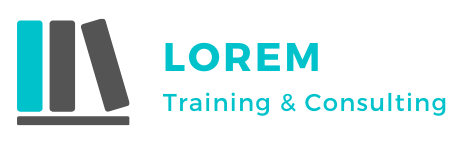Knowing how to introduce yourself professionally is a fundamental skill that opens the door to networking opportunities, job interviews, and establishing your personal brand.
Whether you're meeting new colleagues, addressing an audience, or participating in a job interview, a well-crafted introduction can set a positive tone for future interactions.
This article will guide you through the steps and strategies for presenting yourself professionally, covering the importance of tailoring your introduction, the components of a compelling professional introduction, and tips for delivering your introduction confidently.
Understanding the Context
The first step in introducing yourself professionally is to assess the context of the situation. The details you share in a networking event will differ from those in a job interview or a professional meeting.
Understanding the audience's expectations and the professional setting will help you tailor your introduction to suit the occasion, making it relevant and engaging.
Crafting Your Introduction
A professional introduction should succinctly communicate who you are, what you do, and what value you bring to the table. Here’s how you can structure it:
Start with the Basics
Begin with your name and, if applicable, your job title or professional role. This basic information sets the stage for a more detailed discussion of your professional background and interests.
Highlight Your Professional Background
Briefly mention your current position and main responsibilities, focusing on aspects most relevant to your audience.
If you’re at the start of your career or transitioning to a new field, mention your educational background or any relevant experience that demonstrates your interest and commitment to the new field.
Share Your Professional Achievements or Projects
Choose one or two achievements or projects that you're particularly proud of to highlight your skills and experience.
This could include successful projects, awards, publications, or significant contributions to your field.
These examples should showcase your expertise and what sets you apart from others.
Articulate Your Professional Goals or Interests
Mentioning your professional goals or areas of interest can provide a glimpse into your career aspirations or the direction you wish to take.
This is particularly important in networking situations or interviews where alignment of goals and interests is crucial.
Tailor Your Introduction
Adapt your introduction to the audience and the setting.
The details you share at a networking event, for instance, might be broader to appeal to a diverse audience, whereas, in a job interview, you’d focus more on skills and experiences directly related to the job.
Delivering Your Introduction
The way you present yourself—your tone, pace, and body language—plays a significant role in making a strong first impression. Here are some tips for delivering your introduction confidently:
Practice, But Keep It Natural
While it’s important to prepare and practice your introduction, it should not come off as rehearsed. The goal is to be confident and natural, allowing your personality to shine through.
Be Concise and Clear
Keep your introduction concise and to the point. Aim for a duration of about 30 seconds to a minute, ensuring clarity and focus in your message.
Use Positive Body Language
Maintain good posture, make eye contact, and use gestures moderately to convey confidence and engagement.
Be Mindful of Your Tone and Pace
Use a clear, enthusiastic tone to convey your passion for your work and interests. Be mindful of speaking too fast, which can make you seem nervous.
Adapt and Respond
Be ready to expand on any part of your introduction based on the audience's reaction or questions. Flexibility shows that you’re not just reciting a script but engaging in meaningful conversation.
Making a Lasting Impression
A professional introduction is more than just stating your name and job title; it’s an opportunity to make a lasting impression. Here are additional tips to ensure your introduction leaves a positive impact:
Connect on a Personal Level
If appropriate, briefly mention a personal interest or hobby that can make you more memorable. This helps humanize your introduction and can serve as a conversation starter.
Show Enthusiasm
Your enthusiasm for your profession or the opportunity to meet new people can be contagious. It demonstrates your positive attitude and energy, qualities that are appealing in any professional setting.
Offer Value
Think about what value you bring to your professional interactions.
Whether it’s your expertise, your network, or your perspective, indicating how you can contribute to others makes your introduction more compelling.
Follow Up
After making a professional introduction, consider following up with an email or LinkedIn message to reinforce the connection. This can be particularly effective after networking events or professional meetings.
Conclusion
Introducing yourself professionally is an art that requires thought, practice, and a keen understanding of the context and audience.
By carefully crafting your introduction, practicing its delivery, and engaging with your audience, you can make a strong and positive first impression.
Remember, a professional introduction is the starting point for building relationships, opportunities, and your personal brand in the professional world.
Approach each introduction as an opportunity to showcase your professionalism, confidence, and unique value. With these strategies in mind, you’re well on your way to mastering the art of the professional introduction.

